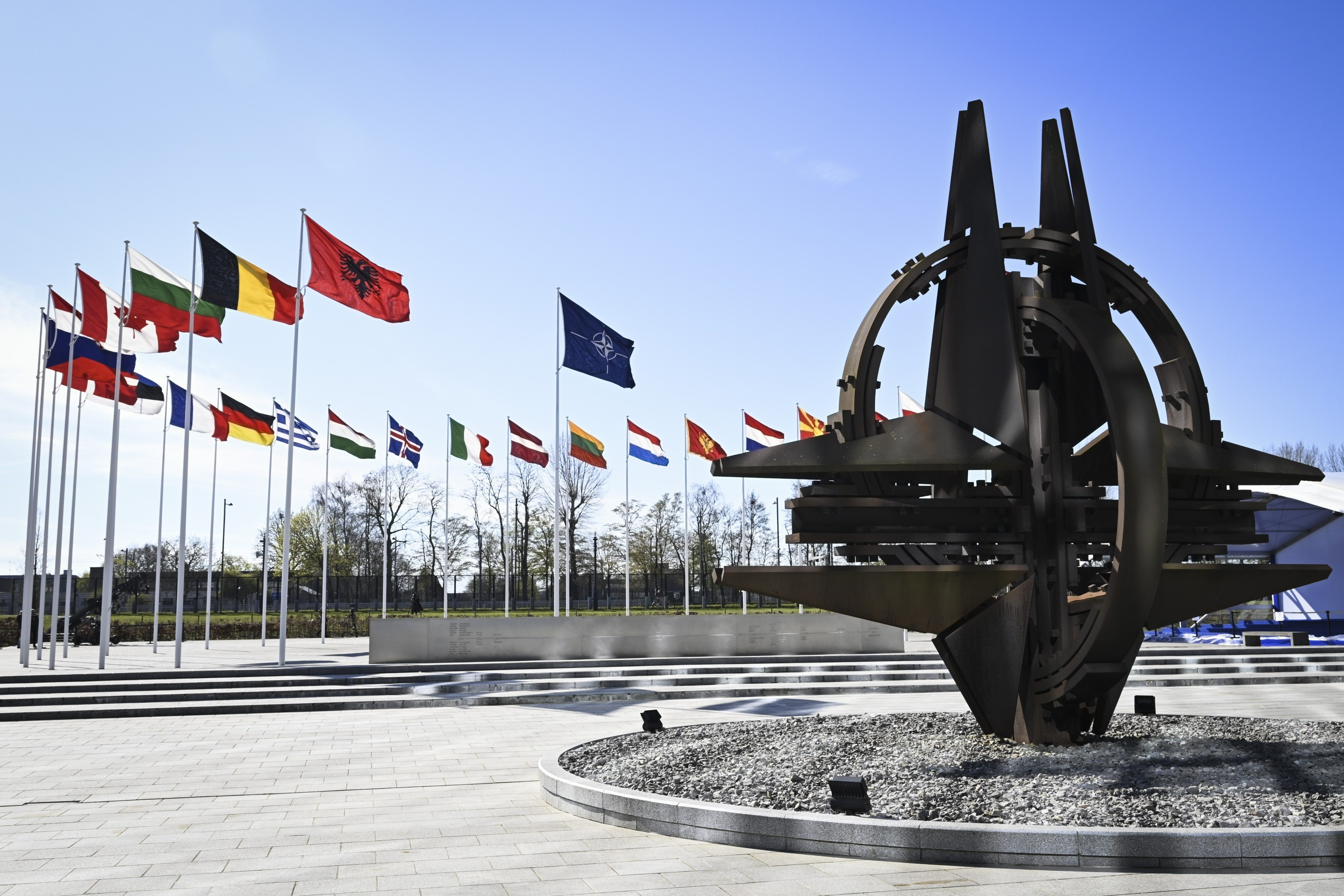NATO
NATO Summit 2025 – Allies meet in The Hague for a numbers game

A sculpture and flags in front of the NATO headquarters in Brussels, Belgium.
© picture alliance/dpa/Lehtikuva | Emmi KorhonenAmid growing global instability, NATO leaders will meet in The Hague on 24-25 June for the annual NATO Summit. As the US has launched a series of attacks on Iran alongside Israel and Russia’s war on Ukraine rages on, Allies will dive into the numbers and discuss defence budgets. Leaders are expected to agree on a large increase in defence budgets to match the security challenges that Europe is facing. And by doing so, they hope to keep US President Donald Trump on board.
The first meeting under the leadership of Secretary General Mark Rutte will immediately be a test of the Alliance members' ability to resolve their differences. The underlying current is one of divergent interests on both sides of the Atlantic. As the US is going through a strategic reorientation and is less willing to shoulder the burden of Europe’s security, European allies are expected to step up and take more responsibility for their own interests. Several members in the north and east have already received this memo and have been heavily investing in defence in recent years, but others are still lagging behind.
What is on the agenda?
The main discussion point for the summit is defence spending. Long advocated by US President Donald Trump, Allies are expected to commit to 5% defence spending of GDP by 2035. The current spending target is 2%, which most allies have only met recently, if at all. The spending boost is a reflection of Europe’s changing security landscape, with Russia’s aggression as a primary driver, and US pressure on European members to step up their contribution.
On Sunday, NATO members already agreed on the spending target in a joint statement, but it will only be official when it is approved by the leaders at the summit on Wednesday. The statement contains a compromise that NATO members spend at least 3,5% of GDP on core defence spending and 1,5% on security-related expenditure on items such as cyber security and infrastructure.
Meeting the 5%
Although the 5% number is clearly steered towards Trump’s demands, they are also justified by NATO’s new capability targets. These targets were agreed by NATO defence ministers earlier in June and entail an overall increase of 20% in new requirements for military equipment. Even though the precise details are classified, Rutte previously commented that priorities include air and missile defence, large formations of land forces, long-range capabilities and logistics. The spending increase thereby fulfils two aims – it will strengthen Europe’s capabilities for future conflicts and it allows Trump to claim a political win back home.
As a last hurdle towards a compromise, Spain on Thursday announced that it would veto an agreement on the spending target. Currently spending just 1,28% of GDP on defence, Spain has the lowest proportion of spending in the alliance and its Prime Minister, Pedro Sánchez, called the boost in defence spending “disproportionate and unnecessary". The Allies eventually settled on an exception for Spain to give it more flexibility, as long as it would still meet the updated capability targets.
For Germany, which met the old 2% target for the first time in 2024, the new spending target would mean an additional expenditure of roughly 135 to 150 billion euros a year. This is more than double what it is currently spending on defence. To fulfil the new capability targets, the armed forces will have to recruit 50,000 to 60,000 additional active troops, according to German Defence Minister Boris Pistorius, and invest heavily in new equipment and production capacity. Discussions currently focus on five to seven new brigades with about 5.000 soldiers each.
The format is the message
The content and format of the summit are fully aligned towards the same goal: pleasing Trump while carving out a larger role for Europe in the Alliance. In line with Trump’s dislike of lengthy diplomatic meetings, the agenda has been shortened to only one item, which will be discussed during one 2,5 hour session (instead of the three traditional sessions). This should result in a communiqué that is not longer than one A4 page and primarily covers the agreement on defence spending.
It is probably not a bad idea to focus on defence spending alone, because it helps hide underlying divisions. With plenty of transatlantic friction on other topics, Allies are eager to present a united front to the rest of the world. Keeping the meeting short and focussed reduces the risk of Trump going on a tangent, or worse, picking a fight.
Zooming out
The agreement on the spending target should be seen as a first step in a much larger process of Europe having to shoulder the burden of its own defence. The speed with which Allies implement the new spending and capability targets will be the real measure of their commitment towards a genuine European pillar in NATO. Agreeing on the numbers is one thing, but it is even more important that Europe builds up capabilities to address the real challenges of our time: the US decoupling from European security and the threat of Russia’s aggression. The budget itself will not impress Europe’s adversaries, but having the right capabilities will.
With the spending target agreed, it is important that European NATO members come together and focus on reaching their capability targets as soon as possible. The only way to make this happen is through close cooperation on military capability development and common usage. This requires strengthening Europe’s defence industrial base, pushing for innovation and enabling joint procurement, areas that the EU already prioritises. But give the size of the challenge, it is secondary whether this happens within the EU context, within NATO, or in an intergovernmental format – as long as it gets done.
